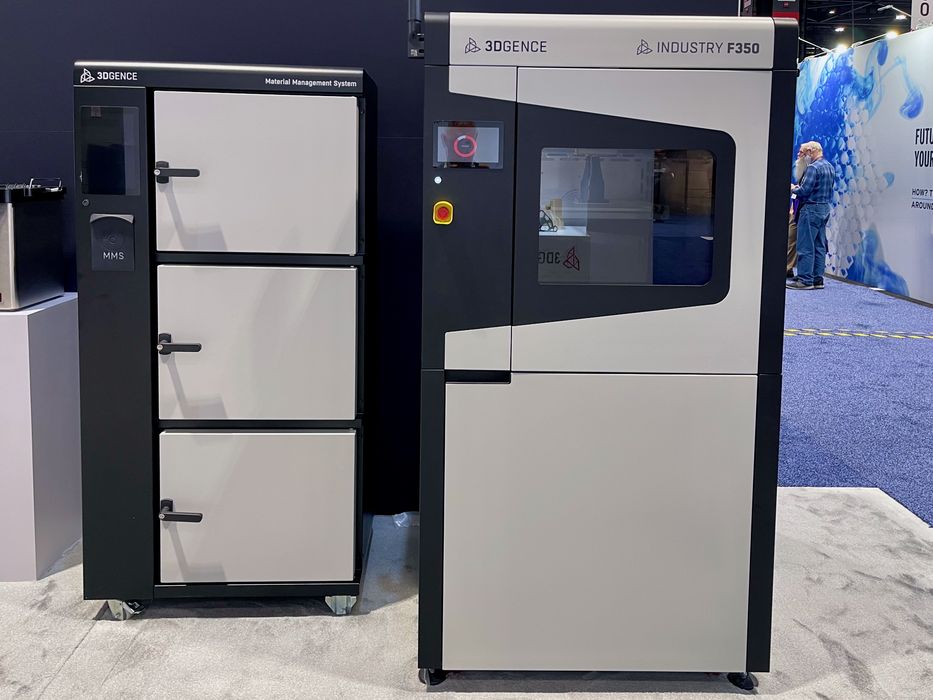
3Dgence’s latest innovation is a way to intelligently dry material.
Drying material is becoming a required step as more engineering materials are used in 3D printing. These materials are much harder to print, and require precise thermal management. In addition the material must be dry before use.
Certain engineering materials tend to quickly absorb moisture from the air, which then boils out during the heat of extrusion. These bubbles spoil surface quality, part strength and can even manifest in a print failure. The answer is to dry the material before printing, which is usually done in a separate drying unit.
There are plenty of drying systems on the market these days, and they are either passive or active. The active units will heat the drying chamber to a set temperature and that’s about it.
Meanwhile, 3Dgence has taken this concept up a level with their new Material s Management System that uses “smart” drying.
As you can see in the above image, there are three separate compartments to hold materials. These can be set to different temperatures.
Why? Because it turns out that there are optimum dryness levels that are achieved with different thermal drying profiles.
3Dgence’s system makes the operator “check in” and “check out” spools of filament into the different drying chambers. It guides the operator to the correct chamber for that specific material, and keeps track of how long it’s been drying.
When a spool is required for printing, the system informs the operator which spool to use. Imagine opening up a chamber and seeing four spools of Ultem — which one has been drying the longest? Have any of them been drying long enough?
That’s a question that goes away with 3Dgence’s approach. They say it “eliminates guessing”.
You might think this shouldn’t be such a big deal, but it turns out it is. 3Dgence reports that many of their customers have switched to production from prototyping, and are therefore doing a lot more printing. Many of these operations do not have dedicated operators, and staff are only intermittently interacting with the equipment. This means they are generally unfamiliar with the state of dried spools at any moment. The new system solves this problem, and makes it easy for operators to choose the correct spool each and every time.
Imagine if an operator accidentally chose the wrong spool and set up a 24 hour print job. The results would be of poor quality and both print time and material would be wasted. This makes it an easy choice for this feature — it just might pay for itself.
The other benefit of this drying system is that it helps ensure that the print quality is near-identical on each job run. The same material at the same humidity level, combined with the same print parameters, should yield consistent results.
3Dgence told us that the system logs all activities, and if a print happens to fall out of the specified thresholds, it could indicate a maintenance requirement. They say the system guides the operator through the entire process.
This is an interesting development, as I hadn’t seen such attention paid to the drying aspects for material. Other systems tend to use a brute force approach for drying that, thinking about it now, might not be the best method.
Via 3DGence
